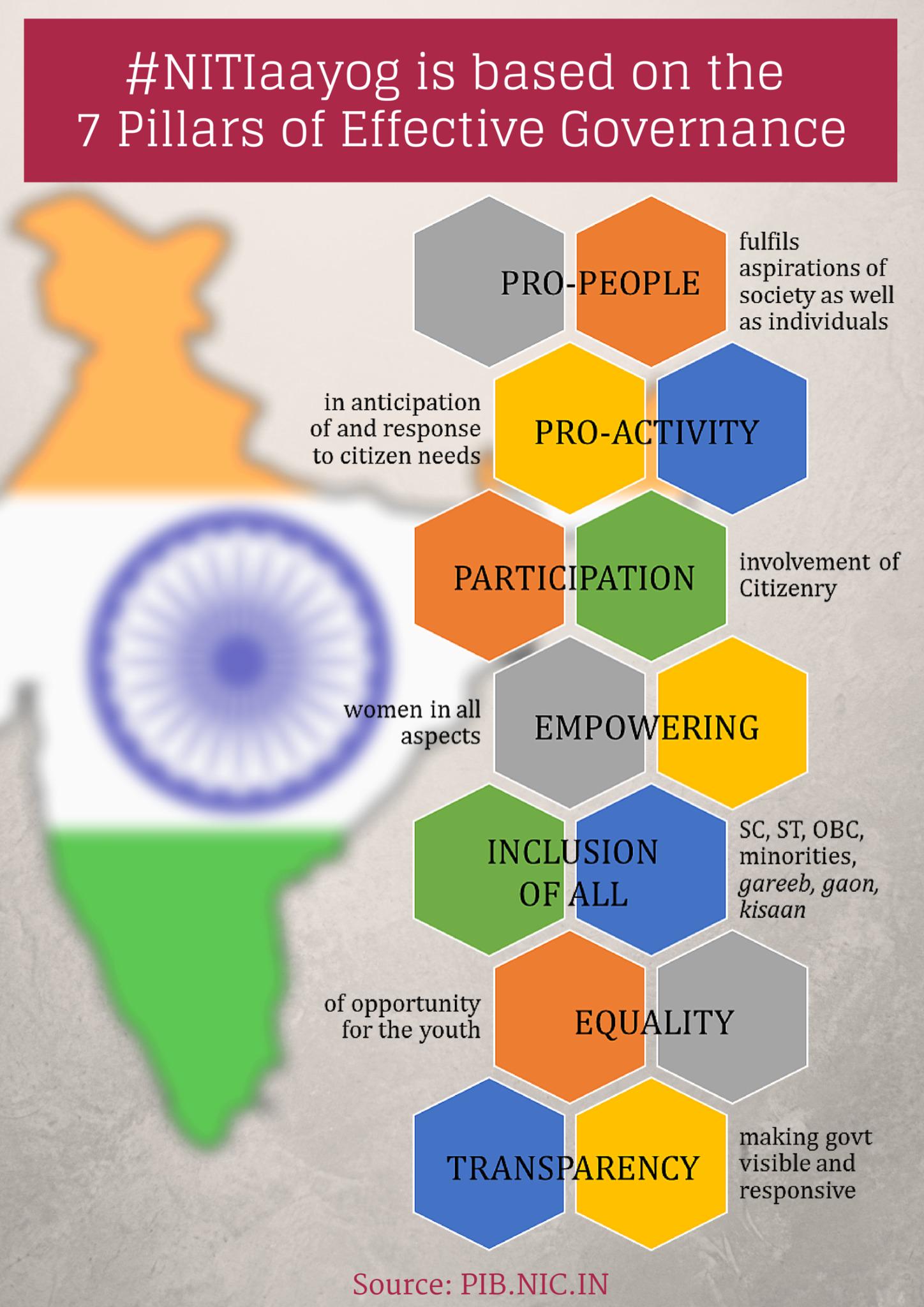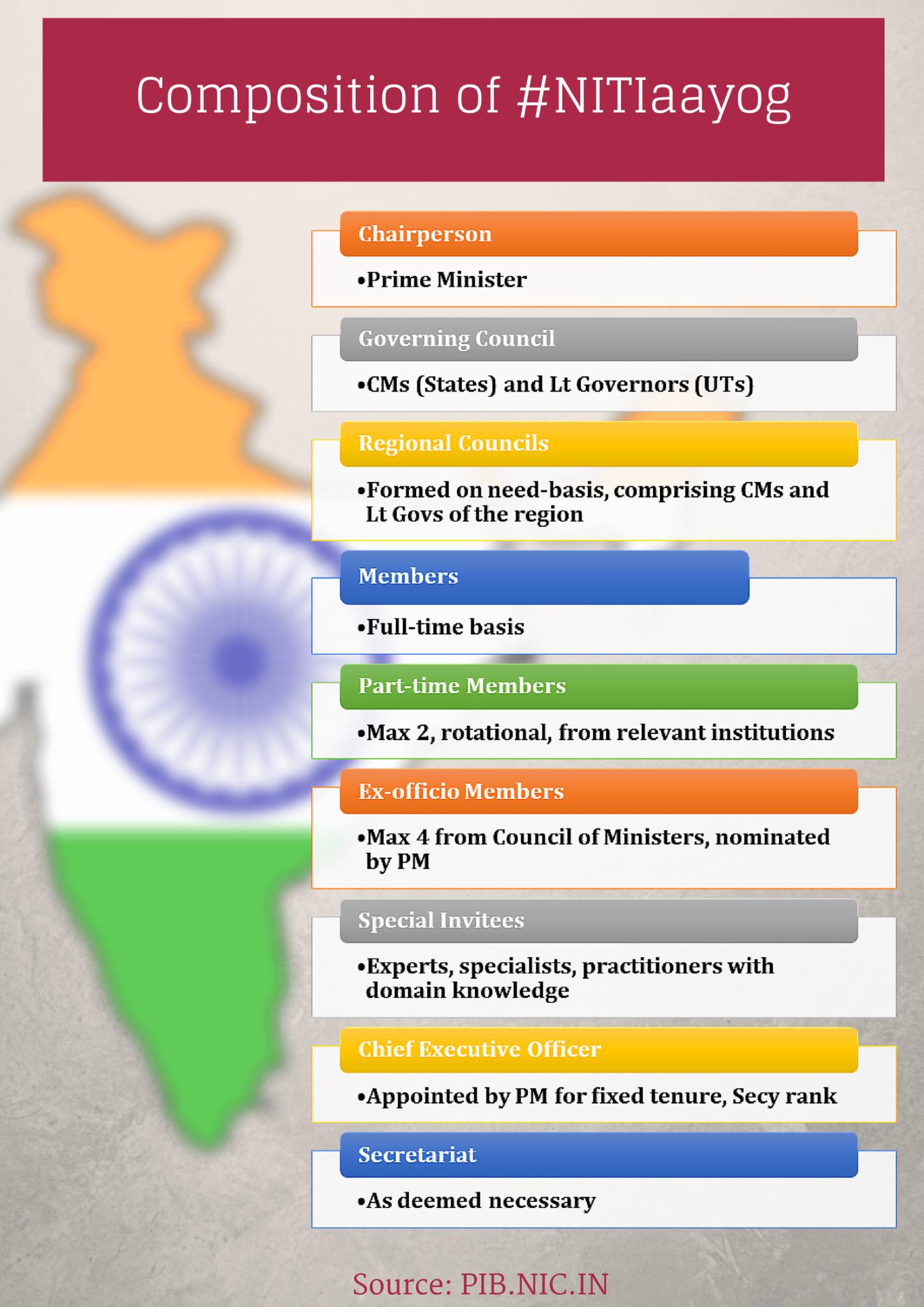Government establishes NITI
Aayog (National Institution for Transforming India) to replace Planning
Commission
NITI Aayog will seek to provide a critical directional and strategic input into the development process
NITI Aayog will seek to provide a critical directional and strategic input into the development process
In
accordance with a key announcement made by Prime Minister Narendra Modi on
Independence Day, the Union Government today established NITI Aayog (National
Institution for Transforming India), as replacement for the Planning Commission.
This comes after extensive consultation across the spectrum of stakeholders,
including state governments, domain experts and relevant institutions.
NITI
Aayog will seek to provide a critical directional and strategic input into the
development process.
The
centre-to-state
one-way flow of policy, that was the hallmark of the Planning Commission era,
is now sought to be replaced by a genuine and continuing partnership of
states.
NITI
Aayog will emerge as a "think-tank" that will provide Governments at the
central and state levels with relevant strategic and technical advice across the
spectrum of key elements of policy.
The
NITI Aayog will also seek to put an end to slow and tardy implementation of
policy, by fostering better Inter-Ministry coordination and better Centre-State
coordination. It will help evolve a shared vision of national development
priorities, and foster cooperative federalism, recognizing that
strong states make a strong nation.
The
NITI Aayog will develop mechanisms to formulate credible plans to the village
level and aggregate these progressively at higher levels of government. It will
ensure special attention to the sections of society that may be at risk of not
benefitting adequately from economic progress.
The
NITI Aayog will create a knowledge, innovation and entrepreneurial support
system through a collaborative community of national and international
experts, practitioners and partners. It will offer a platform for resolution of
inter-sectoral and inter-departmental issues in order to accelerate the
implementation of the development agenda.
In
addition, the NITI Aayog will monitor and evaluate the implementation of
programmes, and focus on technology upgradation and capacity building.
Through
the above, the NITI Aayog will aim to accomplish the following objectives and
opportunities:
· An
administration paradigm in which the Government is an "enabler" rather
than a "provider of first and last resort."
· Progress
from "food security" to focus on a mix of agricultural production, as well as
actual returns that farmers get from their produce.
· Ensure
that India is an active player in the debates and deliberations on the
global commons.
· Ensure
that the economically vibrant middle-class remains engaged, and its potential
is fully realized.
· Leverage
India's pool of entrepreneurial, scientific and intellectual human
capital.
· Incorporate
the significant geo-economic and geo-political strength of the Non-Resident
Indian Community.
· Use
urbanization as an opportunity to create a wholesome and secure habitat
through the use of modern technology.
· Use
technology to reduce opacity
and potential for misadventures in governance.
The
NITI Aayog aims to enable India to better face complex challenges, through the
following:
· Leveraging
of India's demographic dividend, and realization of the potential of youth, men
and women, through education, skill development, elimination of gender bias, and
employment
· Elimination
of poverty, and the chance for every Indian to live a life of dignity and
self-respect
· Reddressal
of inequalities based on gender bias, caste and economic disparities
· Integrate
villages institutionally into the development process
· Policy
support to more than 50 million small businesses, which are a major source of
employment creation
· Safeguarding
of our environmental and ecological assets


No comments:
Post a Comment